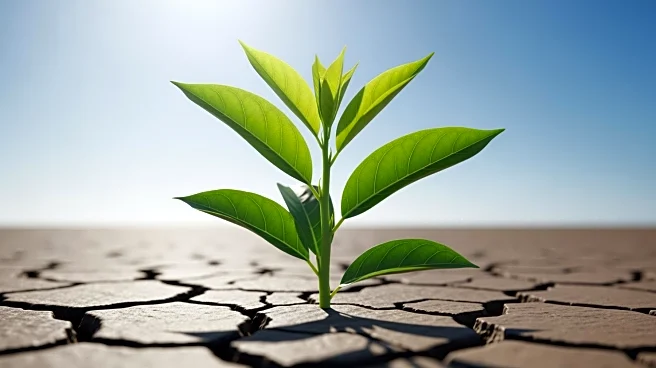What's Happening?
The agricultural extension system in India is facing significant challenges due to underinvestment and structural issues, according to Dr. Himanshu Pathak, Director General of the International Crops Research
Institute for the Semi-Arid Tropics. Despite its historical role in boosting food production during the Green Revolution, the system has stagnated, with investment levels remaining at 0.12-0.16% of agricultural GDP. This has led to gaps in infrastructure and human resources, with a low extension worker-to-farmer ratio and insufficient coordination between public and private sectors. Dr. Pathak advocates for a shift towards a holistic agri-business model that includes value addition, food processing, and better market access. He suggests strengthening Krishi Vigyan Kendras (KVKs) and integrating digital advisory services to enhance outreach and support for farmers.
Why It's Important?
The modernization of the agricultural extension system is crucial for improving productivity and sustainability in India's farm sector. By addressing the current constraints, such as limited manpower and coordination, the system can better support smallholder and marginal farmers, promoting sustainable and climate-smart practices. Enhancing agri-business literacy and market access can lead to increased profitability and resilience against market fluctuations. The proposed changes aim to create a more adaptive and networked extension approach, which is essential for responding to rapid changes in technology and climate. This transformation aligns with the vision of better production and nutrition, as endorsed by the Food and Agriculture Organization.
What's Next?
The future of agricultural extension in India involves unlocking its potential through increased investment and innovative service delivery. Dr. Pathak suggests several key actions, including strengthening KVKs, fostering public-private partnerships, and reforming policy frameworks. These measures aim to create a robust agricultural extension policy that ensures convergence within the pluralistic system and establishes mechanisms for stakeholder coordination. By learning from international best practices, India can restructure its extension model to be more decentralized and market-driven, ultimately achieving higher productivity and sustainability in agriculture.
Beyond the Headlines
The restructuring of the agricultural extension system has deeper implications for India's socio-economic landscape. By focusing on inclusivity and equity, the system can empower marginalized communities and contribute to rural development. The integration of technology and data-driven decision-making can enhance the efficiency of resource use and reduce environmental impact. Additionally, fostering youth-centric entrepreneurship and supporting agri-startups can drive innovation and create new economic opportunities in the agricultural sector.











